Last Updated on January 5, 2025
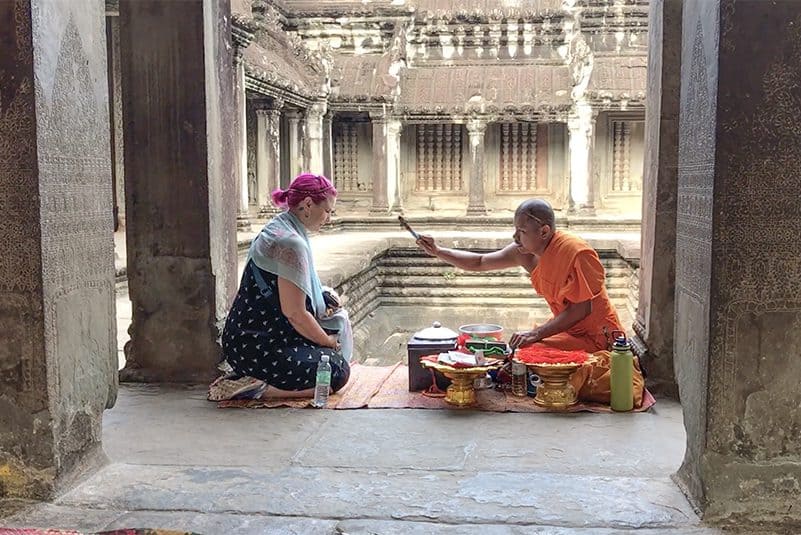
I always wanted to visit Angkor Wat, the archaeological treasure house in the jungles of Cambodia. Finally I had my chance…
– See video below –
Estimated reading time: 15 minutes
By Jim Ferri
En route to Singapore from Vietnam, I took a side trip to Cambodia to visit the temple of Angkor Wat.
In the jungle of northwestern Cambodia, Angkor Wat is Southeast Asia’s most important archaeological site. Not surprisingly, it’s also a famous UNESCO World Heritage Site.
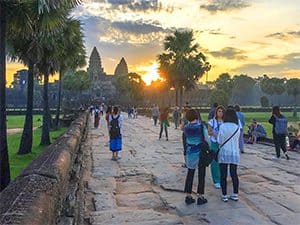
But Angkor Wat is more than just a temple in the jungles of Cambodia. It’s also the largest religious complex in the world. In fact, it’s almost five times larger than Vatican City.
The Angkor Archaeological Park, of which Angkor Wat is just one part, covers more than 150 square miles (400 square kilometers) outside Siem Reap, Cambodia. While visiting Angkor Wat you’ll see the ruins of the capitals of the Khmer Empire from the 9th to the 15th century.
Thankfully, UNESCO has a wide-ranging program that safeguards the sites.
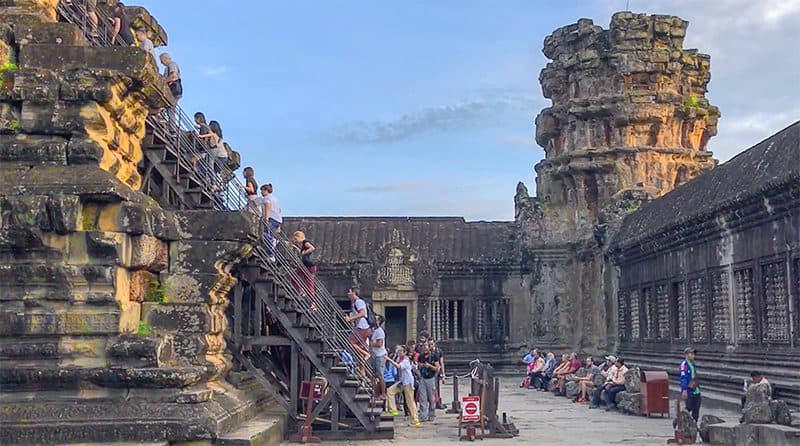
Angkor in Cambodia
Angkor is the capital of the ancient and great Khmer Empire. The most significant archaeological site in all of Asia, it’s in a hot, dense jungle in northwestern Cambodia.
It was the ancient capital of Cambodia from A.D. 802-1431 and the heart — both politically and religiously — of the Khmer Empire. That Empire reached from the South China Sea almost all the way to the Bay of Bengal in the West.
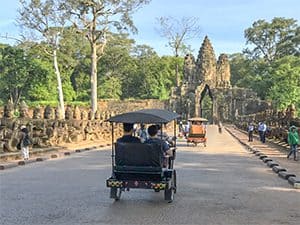
In the 13th century, it was the largest urban complex in the world. Covering an area approximately the size of all the boroughs of present-day New York City, it had 750,000 inhabitants.
Angkor – the word means “city” in Sanskrit – encompasses a series of sites, including Angkor Wat (“Temple City”), Angkor Thom (“Great City”), Ta Prohm (“Ancestor of Brahma”), and other areas.
In the mid-15th century, the Khmer moved the capital and its 750,000 residents to Phnom Penh. Angkor fell into disrepair and was reclaimed over the ensuing centuries by the jungle. Even today Angkor remains a revered religious site to the Khmers.
Although many of its wooden buildings decayed long ago, Angkor Archaeological Park has several Angkors and other ruins. Today, when visiting Angkor Wat you see massive stone temples and other ruins that survive, about 70 in total. All told, the magnificence of Angkor stretches about 77 mi.² (200 km²) through the jungle.
One good way to visit the temples is on a Private 2-Day Tour Temples with Sunset and Sunrise from Viator (TripAdvisor), with free cancellation.
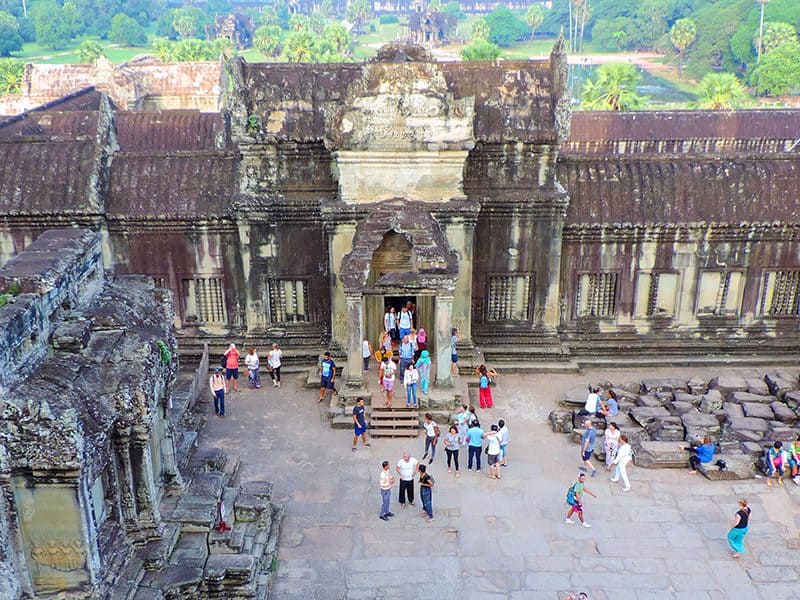
Visiting Angkor Wat
I had made arrangements for a guide and a driver before I arrived in Cambodia. The morning after my arrival, my guide, Sarevy, and our driver, Serei, picked me up at the Meridian Hotel at 4:40am.
15 minutes later, however, in the ticket line to the Archaeological Park, I wondered if perhaps we should have come even earlier.
Our wait, however, wasn’t too long, and soon we were inside the park with hundreds of others, all intent on photographing the famous sunrise that would quickly silhouette the temple.
After the sun was up, Sarevy and I wandered through the fantastic complex, an incredible structure with intricate carvings and topped with five 12th-century sandstone towers. Bas-reliefs cover the walls of the temple and the outer gallery surrounding the complex.
Although it was initially a spiritual and political center built by the Hindus, you also see many images of Buddha since Buddhism replaced Hinduism throughout Cambodia in the mid-14th century.
I found beautiful and interesting views all over the area. The best, naturally, were often on the second level of the temples and other buildings. Be aware also that the stairs are precariously steep and require stamina. But I was well rewarded with the view and the intricately carved bas-reliefs.
The third level (Bakan) is only open to visitors during certain hours. Be aware that you must also be “modestly” dressed: shorts and skirts must be knee-length, and your shoulders must be covered.
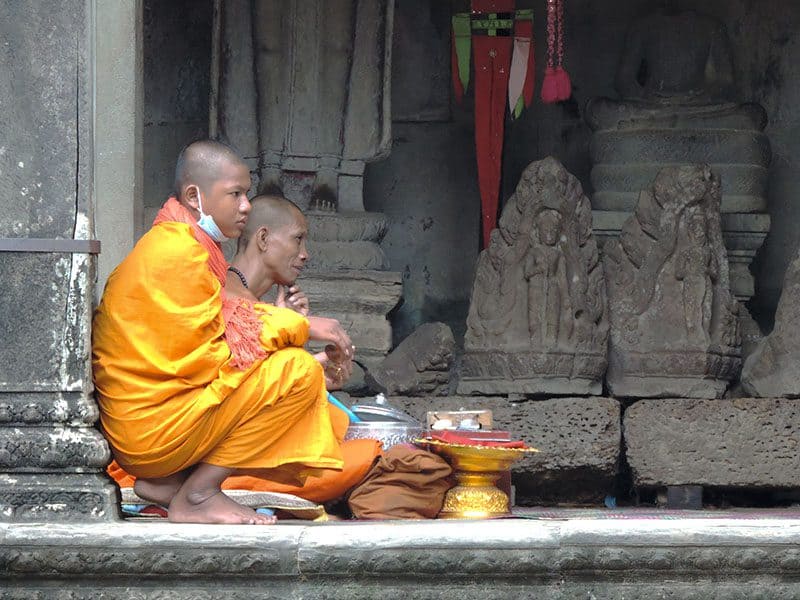
The Monks of Angkor Wat, Cambodia
Sarevy told me there was a Buddhist shrine in the middle of the temple where one always found two monks. We walked over, and I watched a woman approach the orange-robed monk and sit down with him. After a few words, he prayed for her, blessed her, and then tied a string bracelet on her wrist.
A week earlier, a monk in a temple in Thailand had similarly blessed me and also gave me a bracelet. The bracelet signified I was blessed and was to bring me good luck. Mine was white, however; at Angkor Wat, the woman’s was a bright orange, the color of the monks’ robes.
I stayed for a fascinating few minutes, watching the blessings and listening to the chants. While wandering around the complex, I found other visiting monks snapping away with their phones and iPads.
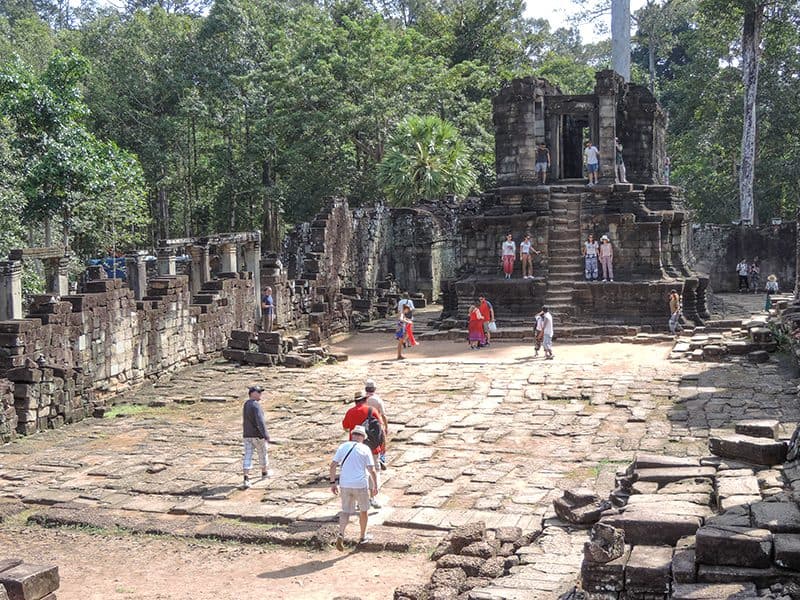
Angkor Thom
After visiting Angkor Wat, we left through its South Gate and walked to Angkor Thom. We paused at one point since Sarevy wanted to show me a little exhibit demonstrating how workers cut and put rocks together in ancient construction. It was fascinating.
Angkor Thom is spread over four square miles (10 sq. km.), much larger than Angkor Wat. The city has five gates, each topped with four massive stone faces.
We approached Angkor Thom’s through its South Gate, the best preserved of the five. More than a hundred large stone faces, each a god with a different expression, line the avenue to it.
There are numerous ruins inside Angkor Thom, but the most famous is Bayon. It’s an incredible temple that exemplifies the ancient civilization of Angkor. The vast temple has 54 towers – with 200+ large stone faces—and rises three levels.
Don’t miss the nearby Terrace of the Elephants, built initially as a viewing platform for the king to view returning victorious armies.
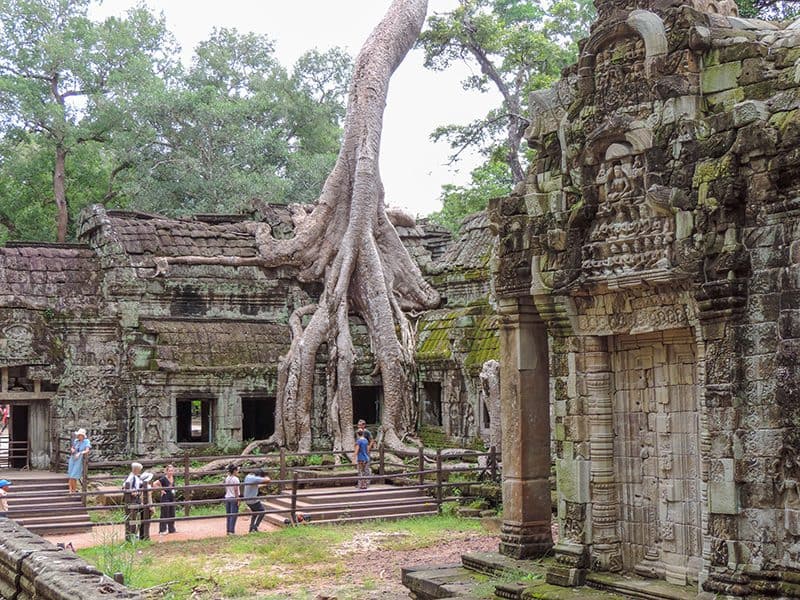
Ta Prohm
It had already been a long morning, and before lunch, we stopped at Ta Prohm, a temple originally built as a Buddhist monastery but which today is overwhelmed by giant strangler fig trees. It’s one of the more mysterious temples in Angkor.
Today, though, many know Ta Prohn better as the site of the filming of the movie Tomb Raider with Angelina Jolie. In fact, the strangler fig tree under which Jolie stood in the film is now known as the “Tomb Raider Tree.”
The temple was discovered during the French Colonial Period, and great care has been taken to leave the site pretty much as found. Although paths are cleared, you see the giant roots of the strangler fig trees “strangling” buildings everywhere. In addition to the “Tomb Raider,” several other trees, including the Crocodile and Waterfall Trees, are also named.
A Lunch Break
After leaving Angkor Thom, we stopped at a restaurant that offered both outdoor eating (under fans) or in the air-conditioned restaurant. It was a nice little clean place with a very courteous staff and a relatively extensive menu.
After Sarevy had brought me inside, I asked him to stay briefly to explain each item. It would have been easier if he just dined with me, as I had invited him and Serei to do, but he politely declined. “No, thank you, Jim,” he told me, “we’re not used to that.”
Opting for culinary safety, I ordered a salad with shredded chicken and pasta and a bottle of Angkor Beer. It turned out to be reasonably good, and four other groups entered the restaurant while I was dining. Obviously, it was where many tour guides bring their clients when visiting Angkor Wat.
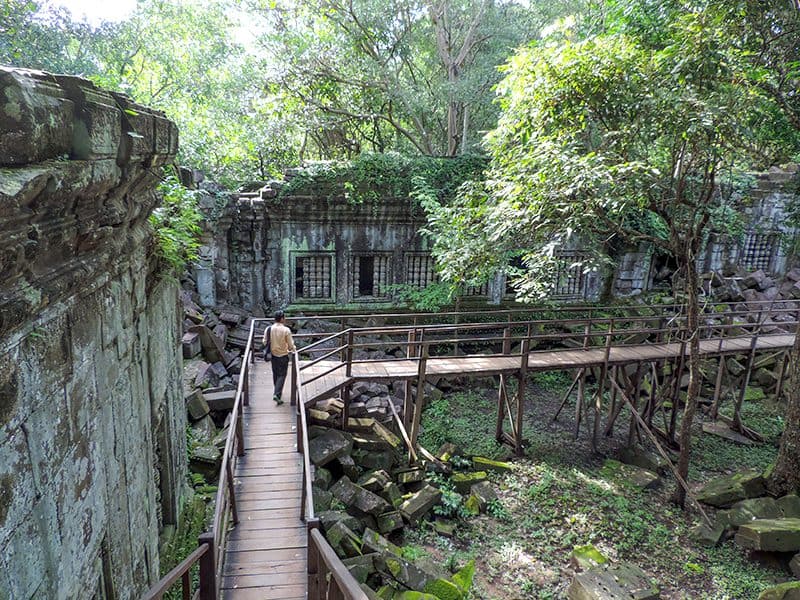
Beng Melea
Earlier, Sarevy had told me of Beng Mealea (meaning “lotus pond”), another site also left unreconstructed after it was discovered. He told me it was a more authentic site since few tourists knew about it. Although it was 25 miles from Angkor Wat, a 1½-hour drive to the east, I wanted to go, and we set off immediately after lunch.
I enjoyed visiting Angkor Wat and its sister Angkors since they provided glimpses of the authentic Cambodian countryside. Several villages intrigued me with their exceptional cleanliness and color.
While the countryside was charming, I found Beng Mealea fascinating since it has a “forgotten’ look. Half-hidden by the jungle, this 12th-century temple was the real thing left in its natural state, more than Ta Prohm or the other sites.
Instead of walking on cleared paths about the ruins, an elevated boardwalk lets you safely meander through the ruins. It was an excellent way to see the site up close while standing safely above the vast piles of moss-covered blocks. From our boardwalk vantage point above the piles, it looked as if an earthquake had destroyed the place.
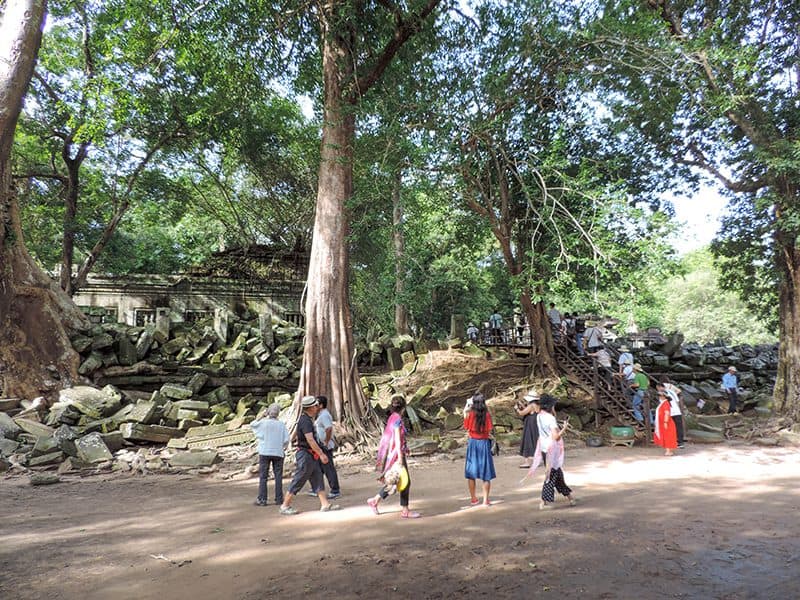
Overrun by the Jungle
Aside from a few spots where a beam supported something for safety, there was no reconstruction in Beng Mealea. It remains overrun by the jungle, precisely as it was discovered by archaeologists. Thankfully, the government will continue to leave it in its current state, only maintaining it to prevent further deterioration.
The view from the boardwalk was excellent. In front of us, giant roots of strangler figs reached out and grasped moss-covered building blocks. Through the dense jungle about me, I could hear the squawk of parrots intermingling with the songs of other birds. Numerous butterflies fluttered about, flaunting their bright colors against the lush green foliage.
It was fascinating to visit Angkor Wat and the other Angkors, standing in the jungle at ancient Beng Mealea, a city frozen in time.
It is another one of those experiences that makes travel so rewarding.
Also rewarding is the opportunity to go beyond the park and see the village life in Cambodia. One top tour is the Two Days Angkor Wat Park-Beng Mealea and Kamapong Phluk Village tour. Kamapong Phluk is a floating village. Since the tour’s host is Viatour, a subsidiary of TripAdvisor, you can cancel it without any penalties.
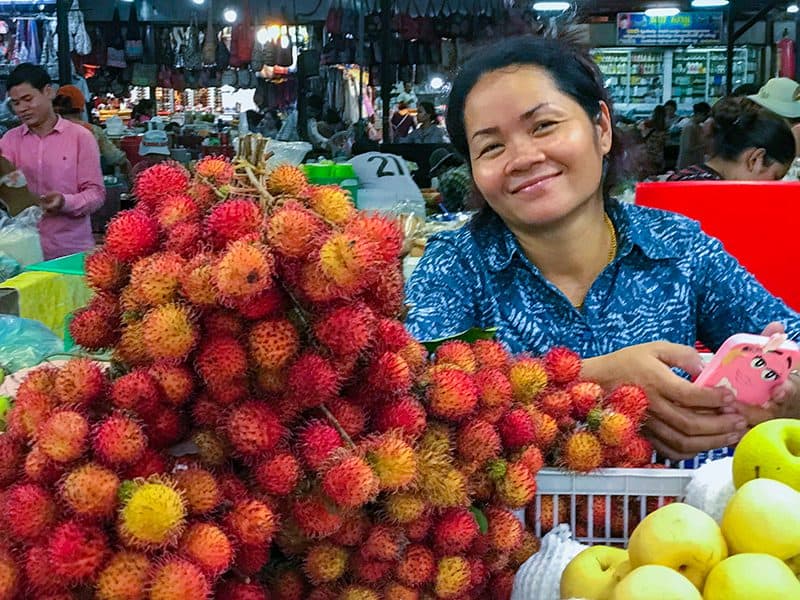
Siem Reap
No longer is Siem Reap just an overnight as it was in years past. It has become a destination due to interest in the Archaeological Park on its doorstep. Travelers to the park have increased from approximately 321,000 in 2003 to more than 2.5 million today.
Today, Siem Reap has hundreds of hotels and B&Bs, as well as numerous restaurants and bars, galleries, and boutiques. Most are run by locals, ex-pats, and repatriated Khmers.
It’s not a large town, but there’s enough to keep you occupied for at least a day just wandering about, visiting galleries, markets, and boutiques, and dining in some excellent restaurants. The markets of Siem Reap have some good handicrafts and are fascinating places for anyone with a camera.
To find them and many other things in Siem Reap, including the best shopping, you may enjoy the popular tour Siem Reap City Hidden Gems. Another popular tour is the Private City Tour of Siem Reap. Since both tours are from Viator, there are no cancellation fees.
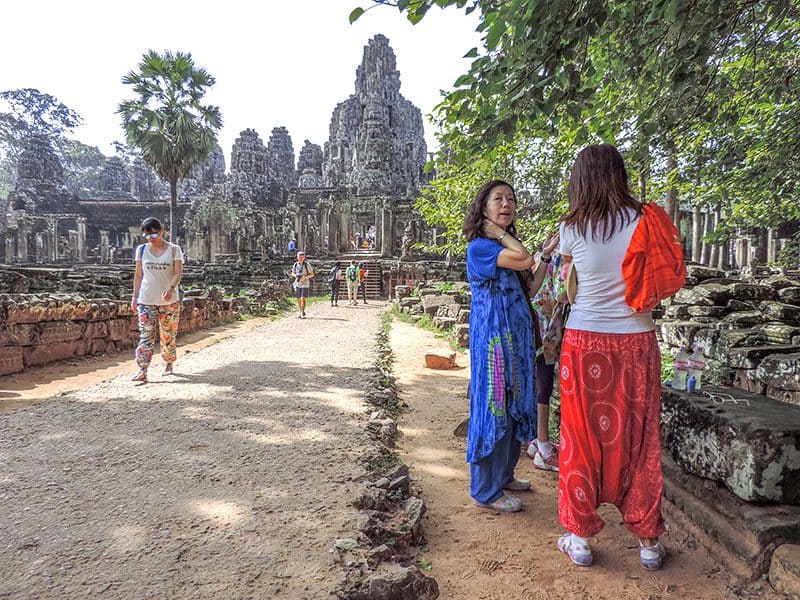
Photo Tips
Angkor provides some good photographic opportunities. But being in the middle of a crowd trying for that perfect sunrise over the temple shot can be a pain. Go instead on the walkway up to the temple and shoot the sunrise and temple with some people in the foreground to provide a sense of depth.
If you’re taking a shot of a monk, position yourself to cut out everything but temple about him. Then, he’ll stand out in his bright robe.
When shooting ruins, always try to include a person looking at the ruins near the side of the photo. It will make it a lot more interesting since it provides a sense of size for the viewer.
And also remember that if it becomes cloudy, include something colorful in the photo. And if it rains, go outside and shoot (or shoot out a window); lousy weather often makes for interesting shots.
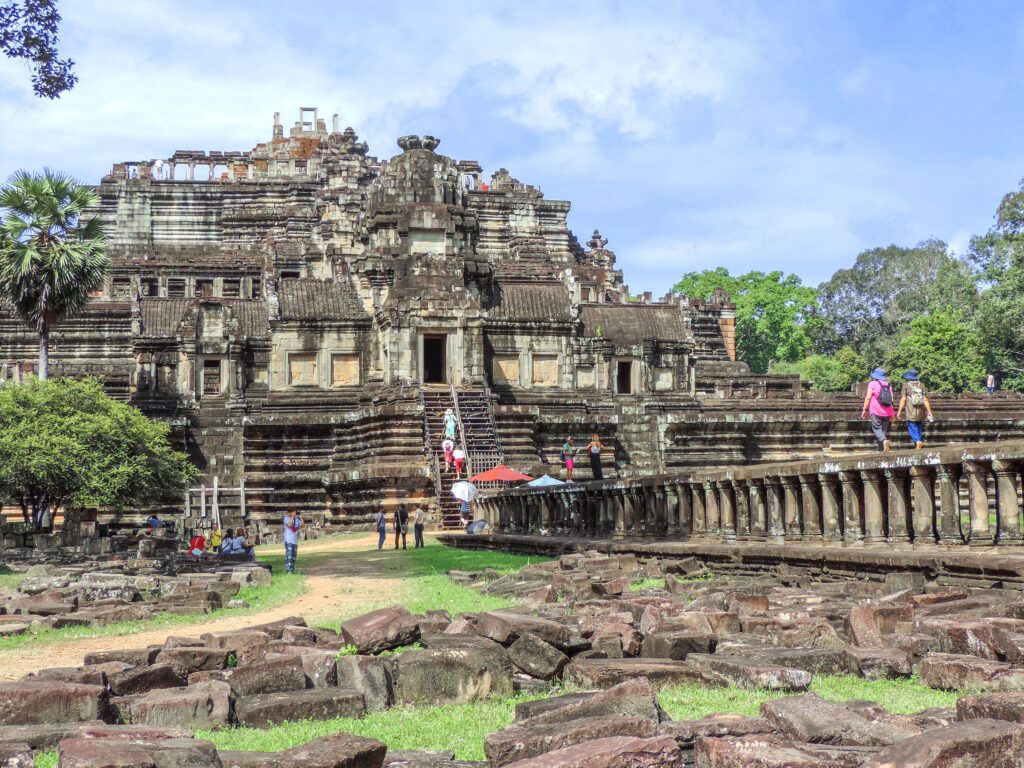
Admission Fees / Opening Hours
You must possess an admission pass (an ‘Angkor Pass’) to visit the temples and sites in the Angkor Archaeological Park. Passes are for sale at the main entrance on the road to Angkor Wat.
Passes are sold in one-day ($37), three-day ($62), and seven-day ($72) blocks that must be used on consecutive days. A photo is required at the time of purchase and is taken on the spot free of charge.
Angkor Wat temple is open every day 5am – 5:30pm. The Angkor Archeological Park is open daily, 5am – 7pm.
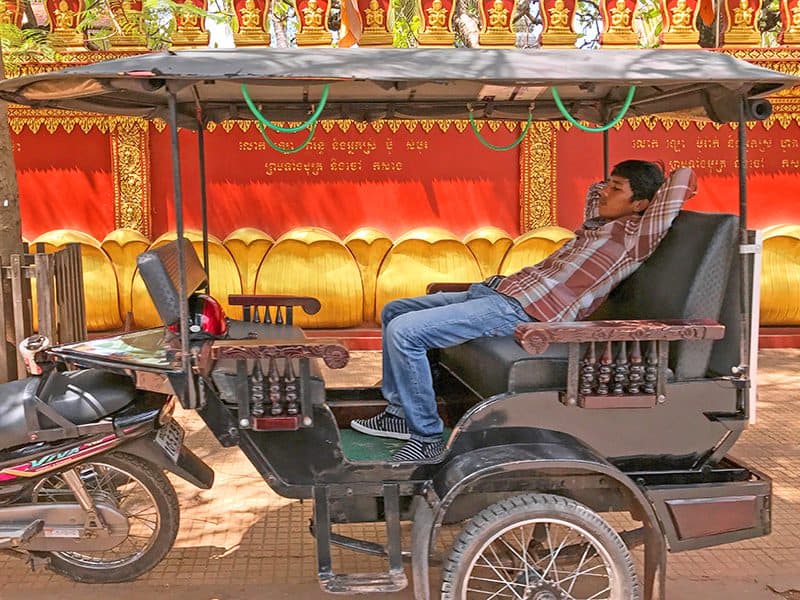
How to Get To Siem Reap
Since I was in Vietnam en route to Singapore, I found it an excellent time to travel to Siem Reap to visit Angkor Wat. I flew from Ho Chi Minh City (I could have also flown from Hanioi) to Siem Reap, about a two-hour flight on Vietnam Airlines.
You’ll also find several flights to Siem Reap from Bangkok, Phnom Penh, Ho Chi Minh City, Hanoi, Singapore, and Kuala Lumpur, among other cities.
If you’re staying in central Siem Reap, you’ll be there within moments after landing at Siem Reap International Airport. The terminal is only 4 miles from the downtown area.
Do I Need A Guide?
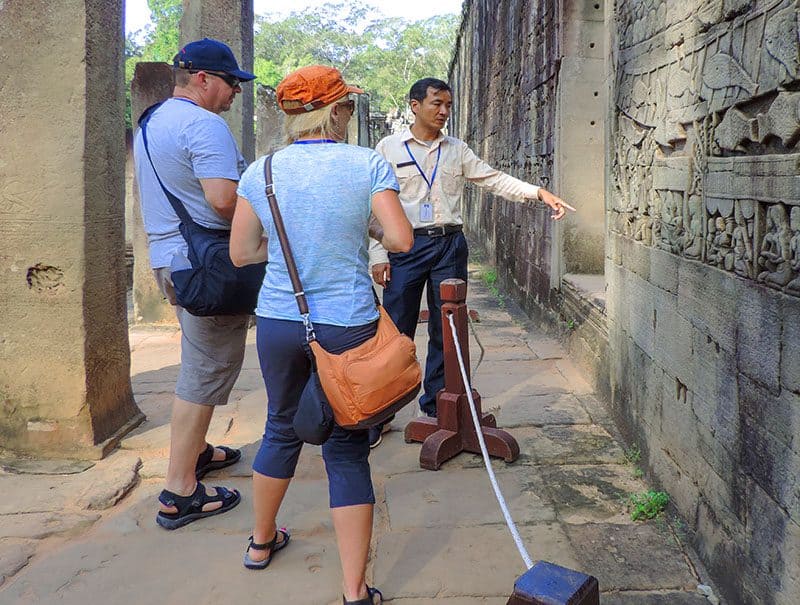
Many wonder if they’ll need a guide to see the Angkor Archaeological Park. The answer is yes. And in addition, you’ll also need a driver not only to bring you out to the park but also to get you around. Remember that the park is approximately 150 square miles (400 square kilometers) in size.
There are many would-be guides in both Siem Reap and the Archaeological Park. You’re better off, however, if you only hire a guide through your hotel or the Cambodia Tourist Guide Association, or join one of the Viator tours noted in this article.
Guides from Tourist Guide Association charge $35 for a one-day tour in Angkor. There is also a $10 surcharge to watch the sunrise at Angkor Wat and an additional $10 to go to Beng Mealea.
When to Visit Angkor Wat
November through March is the peak season for visiting Angkor Wat since you can avoid the sweltering and humid rainy season (May/October). Unfortunately, peak season also means peak hotel prices and peak crowds.
I avoided both by visiting mid-October in the so-called “shoulder season.” For me the shoulder seasons are usually the best time to visit any destination since there is little or no rain, and both temperatures (the weather was beautiful) and hotel prices are down a bit. I also don’t encounter many crowds at that time.
You may also enjoy: Things to Do in Phnom Penh / Things to do in Chiang Mai (and Why I Love it) / A 4-Day Itinerary in Bangkok

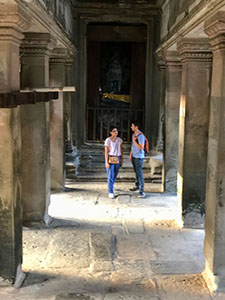
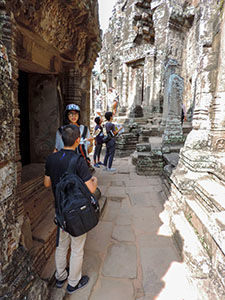
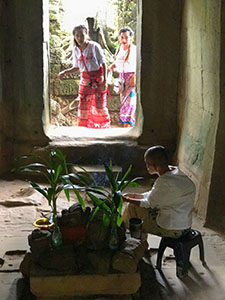
We have visited the Angkor complex twice. Each visit brought a better appreciation and knowledge of the beautiful temples.
I would return again tomorrow if I could
Thank you Jose. I’d love to go back also.
Jim
Yes I would love to go again every year at least a month to have more time to enjoy love all Cambodia ancient temples , intricate cravings , the people, the food, Khmer art souvenirs truly splendid human creations heavenly on earth… there many more Cambodia ancient temples in Thailand or Siam, Laos and Vietnam as splendid and wonder as the one in Cambodia too.
Than you Mick.
Jim